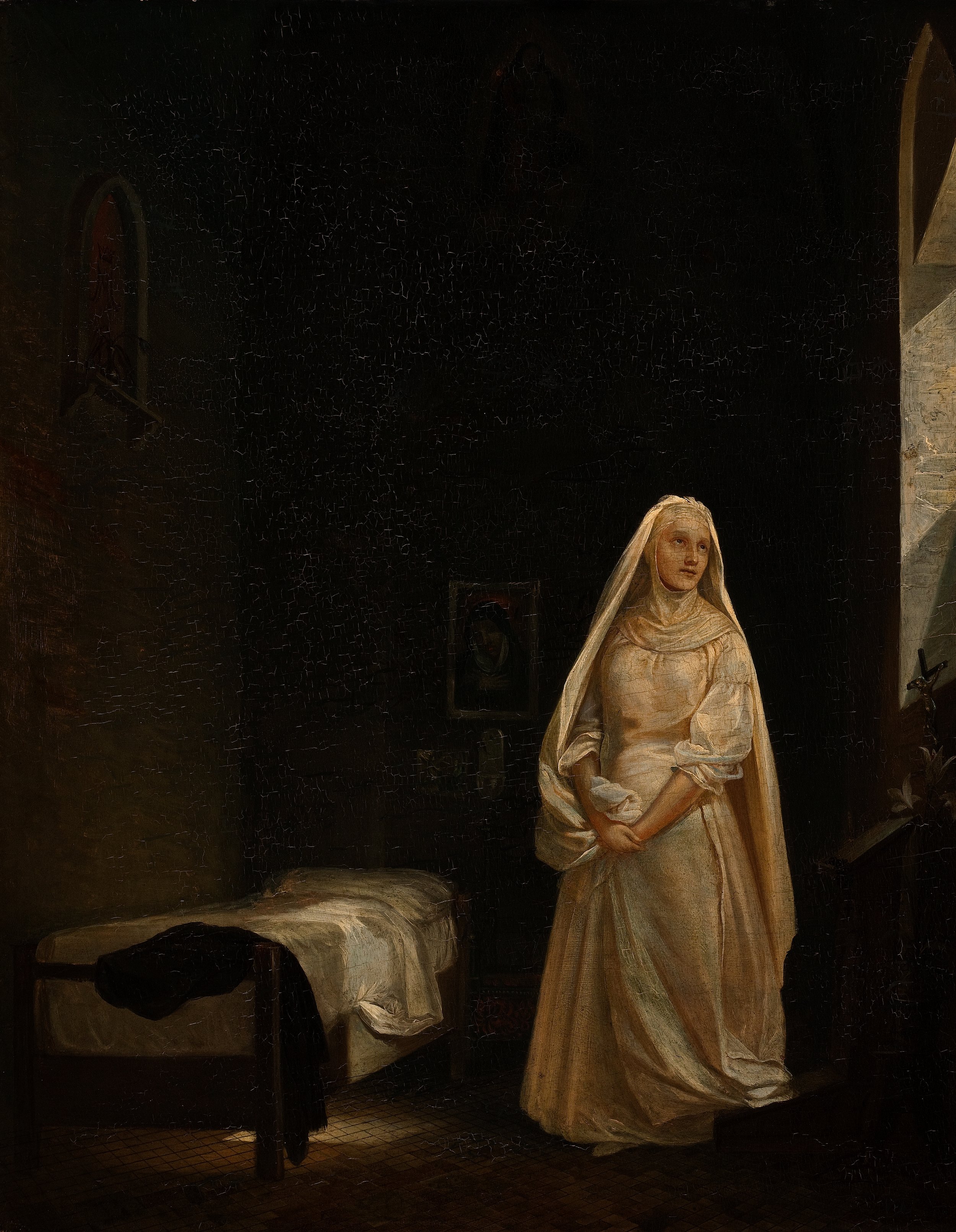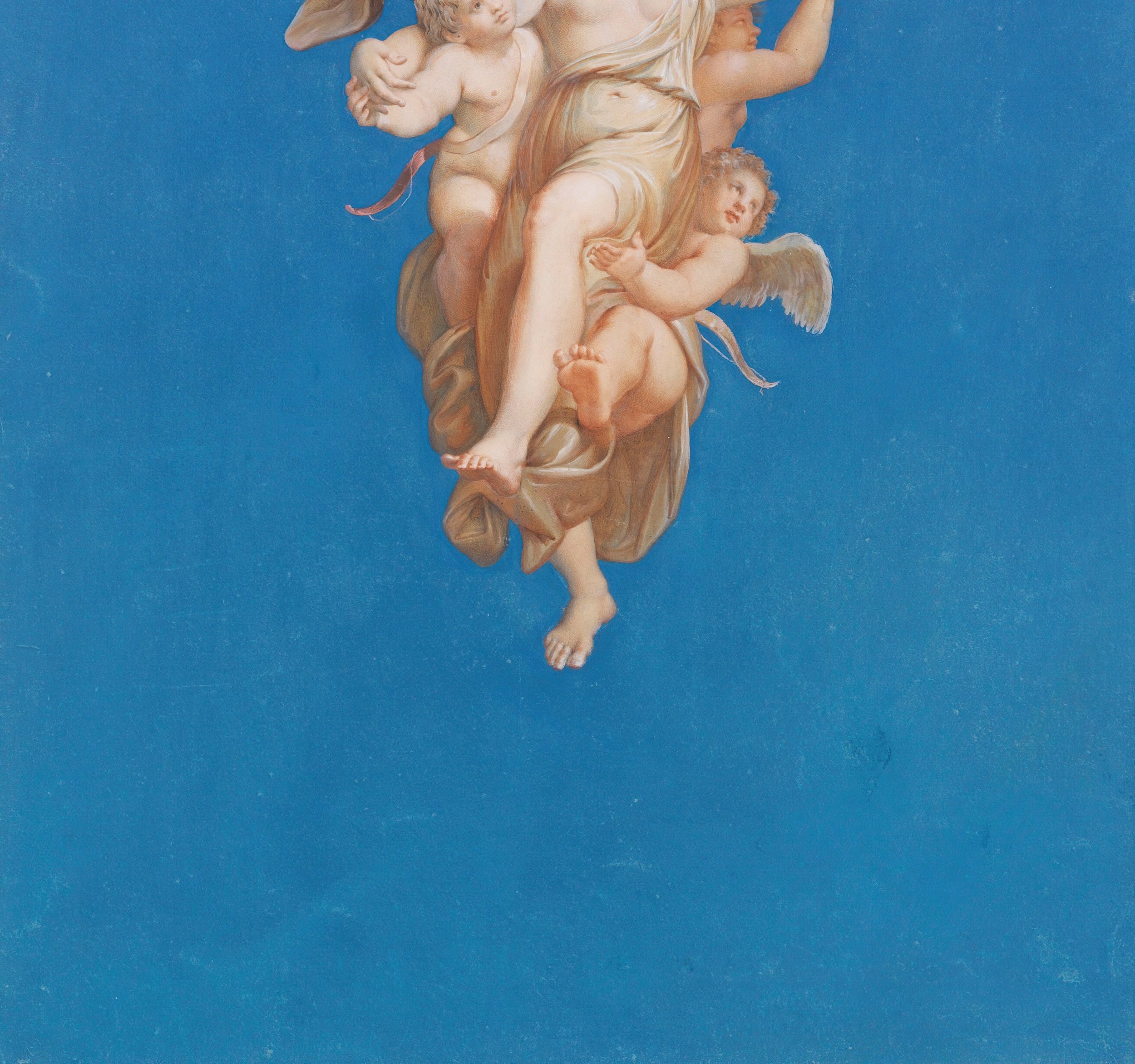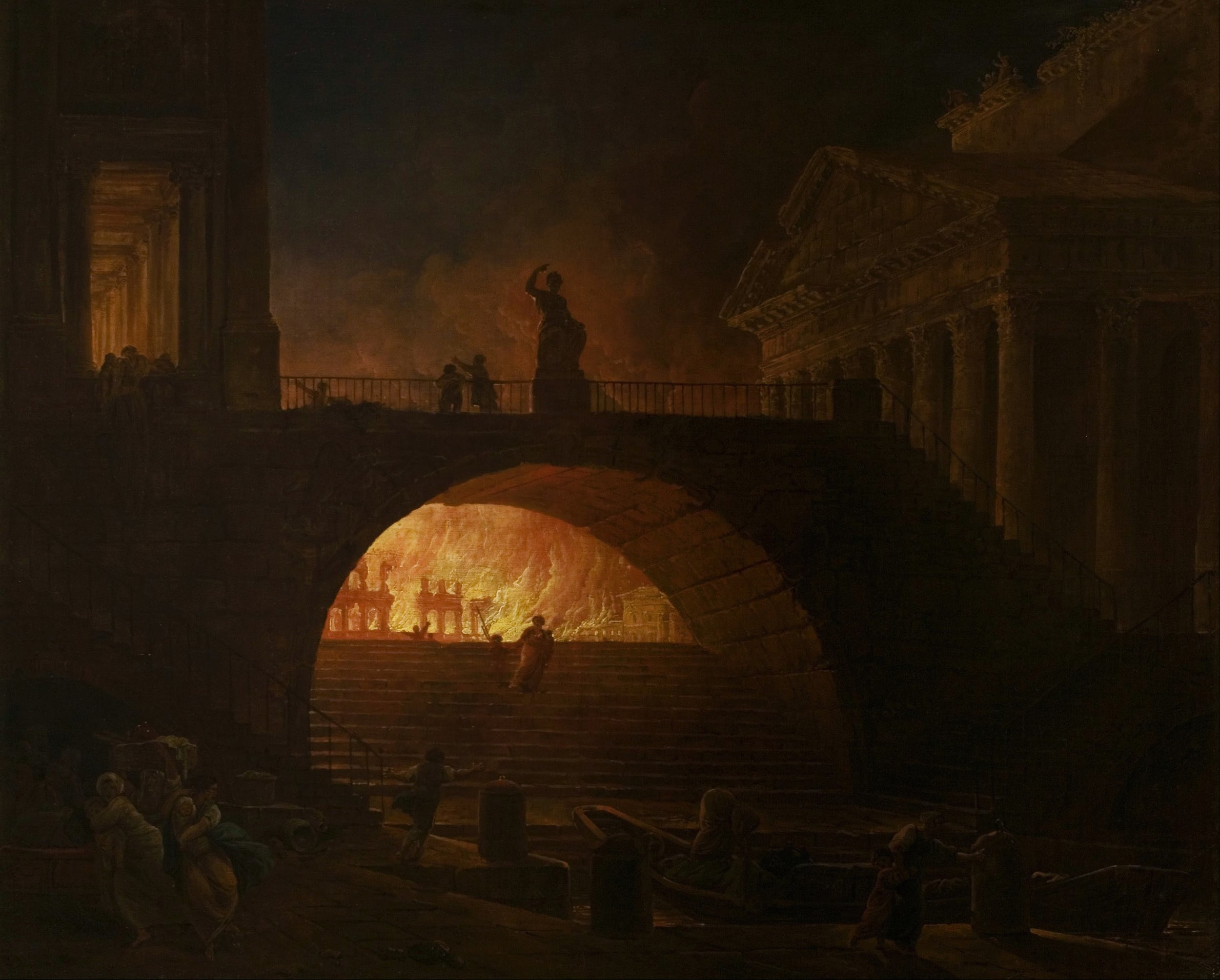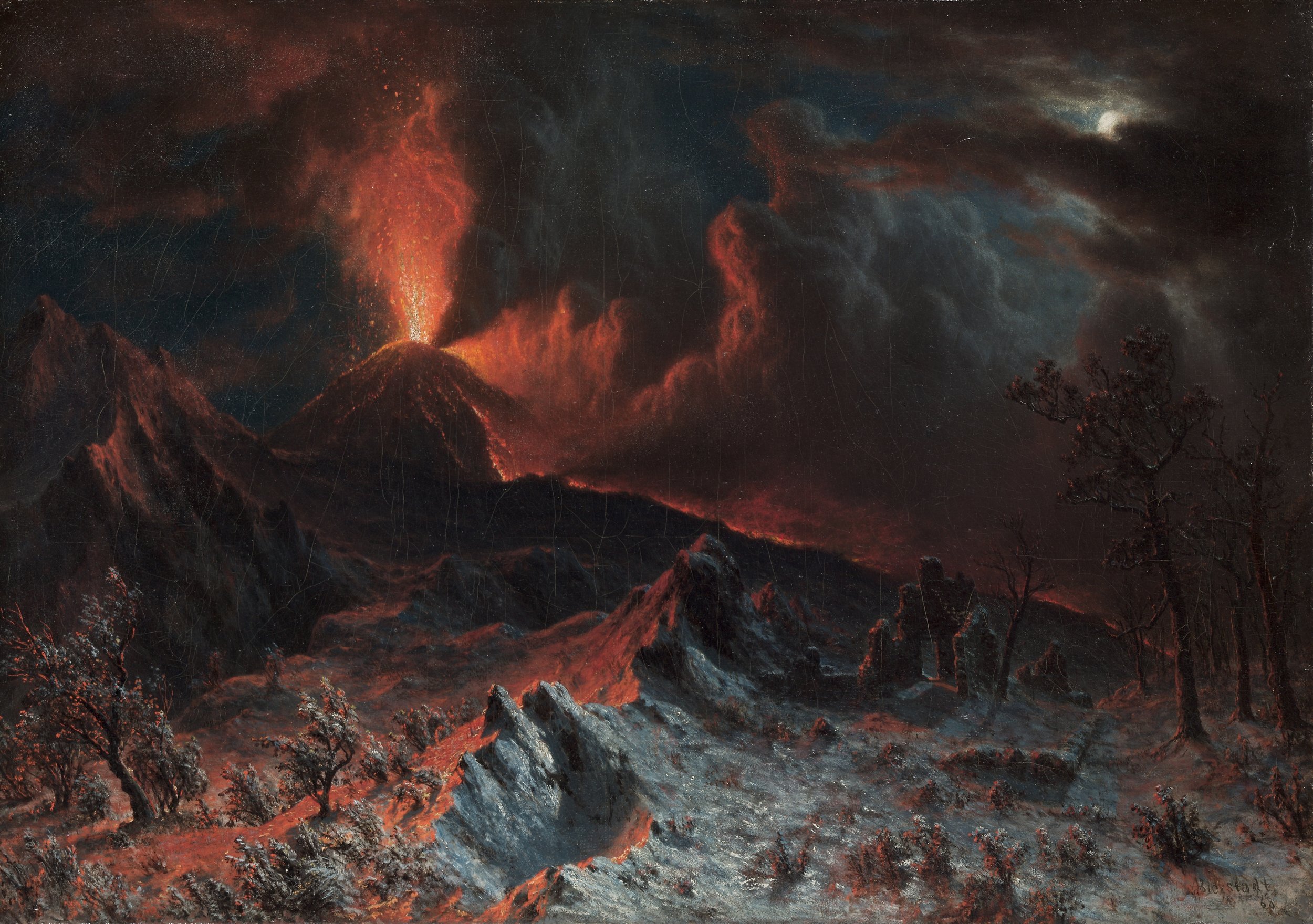Watching the World at a Distance

Watching the World at a Distance
Whitney Crawford
On the Artist’s Ultimate Vocation
Whenever I find myself in the grip of another paralyzing bout of death anxiety, I am usually overcome by two distinct, radical proclivities: (1) to renounce all worldly prizes and join the nearest convent, and (2) to finish writing some creative magnum opus, some as yet crude or fragmentary project. I want to simultaneously save my immortal soul and to leave behind a mortal legacy—to forsake this world, but not before leaving my mark upon it.
I have long been enchanted by the notion of monastic life–by visions of dark-cloaked Benedictines shuffling off to vigils in the early predawn hours, and by their haunting chants reverberating from a drafty medieval abbey. Like many other young and romantically inclined people brought up in the Church, I have even long entertained the prospect of entering religious life myself. I say “romantically inclined,” because what could be counted a more idyllic and worthy vocation than to give up all earthly goods in pursuit of that vision? To die so completely to self, that I might join rank with this solemn black parade of drawn hoods, devoted to scholastic wisdom and ancient mysticism?
Of course, it is one thing to engage this prospect in the abstract, and entirely another to know with certainty what sort of life God has called you to. For my part, I have only ever known such certitude as it pertains to one thing: I am, by some measure, an artist. I am supposed to write and consume creative literature. Regardless of the trajectory that my “practical” career might take, it will never matter more than this comparatively “impractical” endeavor.
Though the creative impulse may appear unproductive in certain material respects, there must be some sense that its value actually lies above various worldly pursuits. Consider the age-old distinction drawn between the active and the contemplative life: how Jesus affirms that Mary, in her unhurried, prayerful listening, had chosen the better part—and how Martha, although she bustled about and distracted herself with many productive tasks, only wound up the more troubled (Luke 10:38–42).
Consider also how consecrated religious life is actually a higher, supernatural, and more extraordinary calling than the ordinary and universal call to the married life–holy matrimony being traditionally held as the sacramental alternative to Holy Orders. The primary reason is that such a life spares our wills from being so perilously divided between love of God and love of worldly things. We may refer here to St. Paul’s assertion that it is better to be unmarried if individual temperance permits, or to 1 Corinthians 7:32–35, wherein he states that a married man’s devotion to God is necessarily split between the affairs of the world and the affairs of the Lord.
It occurs to me, then, that there are certain compelling parallels between the religious life–the “contemplative life,” as it were–and, for the sake of discussion, what we might call the artist’s vocation. Both are extraordinary callings, it seems to me. While I do not quite know whether the artistic endeavor can be called more perfect or meritorious than other pursuits (the way religious life is), I do know that it is a singularly irregular one. Preternatural, almost. When an artist devotes herself wholly to her craft, this can necessitate the giving up of certain productive or material attainments. It more than often requires that she, like the cloistered monk or penniless nun or celibate priest, set herself apart from the ordinary fulfillments of this life.
The artistic vocation is often a solitary one. Like the cloistered religious who is detached from the world for the purer, more wholehearted pursuit of God, the artist must sometimes sacrifice time that would otherwise be spent cultivating relational attachments for the sake of her craft. She must sometimes even surrender financial security, incarnating the culturally pervasive portrait of the starving artist.
This is not to say that every artist must become a Dickinsonian recluse in order to produce quality works, but that the wholehearted devotion to this “higher calling” does typically entail some degree of interpersonal sacrifice. In my experience, I have at times turned down invitations in order to finish editing my own work, foregone social outings and interior investments in my relationships, and even canceled plans out of fidelity to an unanticipated wave of inspiration. While these losses were certainly painful, I was consoled by my love for the work wrought in their stead.
To further illustrate the solitude of the artist, take “The Lady of Shalott,” Alfred, Lord Tennyson’s 19th-century ballad about a young Arthurian damsel imprisoned in a tower, cursed to sit with her back to the window as she weaves a beautiful web. She is only able to view the outside world through a mirror that hangs before her; if she looks at it directly, she will die. She is, at first, perfectly content to carry on rendering the scenes she observes through the mirror.
“No time hath she to sport and play:
A charmed web she weaves alway…
“She lives with little joy or fear.
Over the water, running near...
“Sometimes a troop of damsels glad,
An abbot on an ambling pad
Sometimes a curly shepherd lad,
Or long-hair’d page in crimson clad...
“But in her web she still delights
To weave the mirror’s magic sights...”
It is only after she glimpses two young newlyweds through her mirror one night that she decides to be no longer satisfied with merely watching and artfully depicting the world from afar. Then, upon catching the reflection of the handsome Sir Lancelot riding by, the titular Lady declares that she is “half-sick of shadows,” and turns to gaze at him directly. She casts aside her woven web, thereby sealing her own doom. By the time she has climbed down from her tower and sailed across the river to Camelot, she has succumbed to a tragic, fated death. Thus, love—but moreover, her desire to no longer be so distant from the world—becomes her undoing.
Some scholarly interpretations of this work revolve around that alluded-to conflict, debating whether an artist, necessarily isolated from the common bustle and relational allure of the world, may ever hope to truly partake in it… or whether she is cursed to spend her life on the outside looking in, consigned to rendering in art what she may but view from behind a glassy veil.
In spite of these parallels, however, and in spite of the ordinarily virtuous preclusion of certain created goods, the devotion to art as opposed to other forms of earthly devotion (to spouse, to possessions, to various temporal allures) involves its own kinds of spiritual peril. As Thomas Merton wrote of his parents in his seminal The Seven Storey Mountain: “They were in the world and not of it—not because they were saints, but in a different way: because they were artists. The integrity of an artist lifts a man above the level of the world without delivering him from it.”
If all this is true—this notion that the life of the artist runs uniquely parallel to that of the monastic—then it is also important to parse the points at which these paths diverge. So far as I can figure, these include the proverbial “near occasion” of vanity and pride and, above all, the object to which one directs her devotion. By this I refer to the plain fact that it is frequently an artist’s primary defect to make an idol of all things beautiful; she is ever liable to set her heart upon them—as any human may be liable to set her heart upon earthly things, rather than upon the things above (Col. 3:2).
In sum, though the artist might renounce the comforts of certain close relationships or material possessions, if she still clings to vain fantasies of recognition and success—or to the admiration of those things she creates, the artworks themselves—then her virtue is imperiled. For then she is still enslaved to some manner of earthly attachment. Therefore, the artist is uniquely prone to the ruinous, misplaced love of mere “created things” (that is, to the inordinate love of something other than the Creator himself).
In The Ascent of Mount Carmel, St. John of the Cross muses at length about this particular folly. He writes that if our wants and affections are thus divided, it necessarily implies that the magnitude of our devotion to God could be comparable to our love of something else, returning us to that aforementioned perilous division between love of God and love of worldly things. To remain in such a bifurcated state is, therefore, an offense against him. It is the spirit of idolatry, no less. I may here invoke another mythic illustration of the artist’s hamartia (with respect to her idolatrous inclinations): Ovid’s story of Pygmalion and Galatea, wherein the sculptor falls in love with his own ivory creation.
St. John compares “all created things” to “crumbs that have fallen from the table of God;” although what goodness they do possess comes from him, they are in themselves trivial in comparison to him. It is for this reason we should not be desirous of these crumbs, since they serve only to “whet the appetite, rather than satisfy” one’s hunger.
If created things are but meager reflections of their creator, of a God who is beauty itself, then it is necessary to love them in a proper manner—which is to love them for God’s sake, and in recognition of the much greater honor that he alone is due. I once heard the analogy that to harbor inordinate love for created goods is akin to a man who claims to love his wife but is more interested in her photograph than in the actual person. Recall how St. Thomas Aquinas likened his own writings in the Summa (magnificent by all created standards, of course) to mere straw in comparison with the knowledge of God that had been revealed to him supernaturally.
Therefore, the existential tension between my two radical impulses—to either become a nun or write the next Great American Novel—may really represent a broader desire for eternal things. Both may be read as manifestations of our longing to outlive our mortal flesh–whether by creating some enduring work of art or by placing all our eggs in the basket of spiritual advancement.
J. R. R. Tolkien’s short story “Leaf by Niggle” is understood to be an expression of his own philosophy on human sub-creation and the artistic impulse. Niggle, the story’s protagonist, is an artist damned to live amongst others who have no appreciation for art. He spends the whole of his life agonizing over one particular work: a painting of a great tree, tucked within a great forest and backgrounded by a great mountainous country. While he does grudgingly attend to his everyday duties and mundane obligations—including helping his handicapped neighbor run various errands—he sees these as unwelcome “Interruptions” to his more important work.
Although Niggle is peripherally aware that he will soon be forced to take a trip, he makes no preparations for the journey (death). Instead, he devotes all his efforts to rendering each leaf of his tree just right. At last, he can put off this journey no longer. He goes, having wasted his time and energy (some of which might have been better spent enacting good works, cultivating his virtues) perfecting each detail of that now-unfinished, yet-imperfect painting.
Consequently, he must make a prolonged stop at a sort of “institution,” where he passes his days performing painstaking, menial labor (purgatory). Only once his time has been serviced is Niggle allowed to continue his journey, to a gentler place–a place he soon recognizes as the fully realized tree and forest and mountainous landscape that he had toiled over so ruinously in life. Here, however, what he sees is more real and beautiful than he could have ever imagined (or ever hoped to render on his own). Meanwhile, the reader is informed that Niggle’s original canvas has been abandoned, and since used to repair a badly damaged roof. It has been all but forgotten—destroyed by the ravages of time. Only a single shred of a leaf remains.
Suffice it to say that Niggle would have been better off preparing for his journey from the start. I believe ambitious types, artists and otherwise, often need reminding of this: that the minor nuisances, duties, or “Interruptions” to what we may deem more worthy of our time are in fact opportunities to prepare for the journey on which we must all eventually embark–whose final end will prove sweeter and more deserving of our efforts than any mortal rendering.
If anyone should find himself torn between the artistic sub-creative impulse and the direct, undiluted pursuit of holiness, he would do well to remember this: that whatever delight he has gleaned from sweeping oil landscapes or literary masterworks will utterly pale in comparison to the delight found in those things which “no eye has seen, nor ear heard” (1 Cor. 2:9). Whether it is by means of a religious vocation or otherwise, attaining to daily holiness and saintly austerity is the incomparable path.
In the case of the good religious, the natural pain of forsaking created goods—marriage, family, possessions—is assuaged by the pure love of God and the knowledge that one’s devotion is no longer divided between these disparate desires. The artist, on the other hand, runs the risk of finding reprieve from her sacrifices in the untempered love of art or beauty itself. She must, therefore (and of course by she, I refer also to myself), seek to free herself from this ensnarement.
Indeed, each soul so inclined must seek to detach herself from the inordinate love of her own sub-creations—regarding them as but “straw;” so that should God ever ask what she desires for recompense, she may reply without a moment’s hesitation: “Non nisi te, Domine.” Nothing but you, Lord.
Whitney Crawford
Writer & Psychologist
Poet, Writer & Clinical Psychologist currently residing in Virginia
Painting by Carl Gustaf Plagemann




